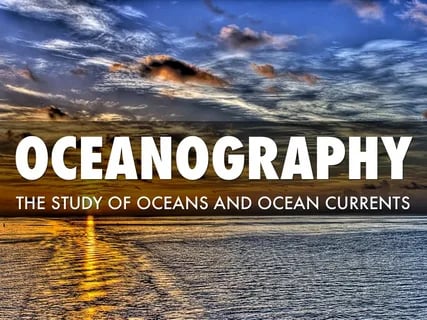Prologue to Oceanography
Oceanography, the clinical investigation of the seas, is a subject that envelops various sub-disciplines and systems. The period is from the Greek expressions “Oceanus,” meaning sea, and “graphic,” which implies composing or depiction. Consequently, oceanography is the framework and see of the sea. This field is fundamental because, in reality, the seas cover more than 70% of the world’s floor, play a vital role in managing the environment, and are home to an impeccable variety of species.
Customarily, oceanography started with early travelers who planned the seas and accumulated examples. From the journeys of Skipper James Cook to the artworks of the HMS Challenger undertaken in the nineteenth hundred years, these early endeavors laid the dream for momentum oceanographic studies. The meaning of oceanography couldn’t possibly be more significant; it’s fundamental for skillful atmospheric conditions, anticipating regular disappointments, and taking care of marine sources.
Oceanographic Disciplines
Oceanography is divided into various key trains, each spending significant time in extraordinary parts of the sea. Natural oceanography investigates marine life forms and their connections with the climate. This discipline looks at the entire part from the littlest tiny fish to the main whales, dissecting their life cycles, ways of behaving, and jobs inside the marine climate. Compound Oceanography examines the synthetic organization of seawater and how it changes as the years progressed. This incorporates understanding supplements, toxins, and the impacts of compound responses on marine presence and sea wellness.
Actual Oceanography has some expertise in the substantial houses and systems of the sea. This incorporates the inspection of sea flows, wave elements, and the cooperation between the sea and the climate. Land Oceanography analyzes the construction and synthesis of the sea ground. This comprises examining ocean bottom spreading, plate tectonics, and submerged volcanic action.
The Design of the Sea
Data on the state of the ocean is fundamental for oceanography. the sea might be separated into various layers dependent absolutely upon profundity and substantial qualities. Sea Layers and Zones: the ocean is separated into phenomenal layers, which incorporate the epipelagic zone (surface to roughly 2 hundred meters), the mesopelagic district (200 to 1,000 meters), the bathypelagic area (1,000 to 4000 meters), and the abyssopelagic area (4000 meters to the sea ground). The sea ground isn’t level yet works Dissemination of designs, for example, mid-sea edges, remote ocean channels, and submerged mountains. these capabilities assume a gigantic part in the sea stream and marine biological system. Marine biological systems range from shallow waterfront regions like coral reefs and mangroves to the remote ocean. each climate helps a remarkable cluster of life organization adjusted to specific natural circumstances.
Sea stream and Climate
Sea flow plays a crucial job in managing the World’s environment. Floor flows are pushed through wind designs and the World’s pivot, while profound flows are passed through contrasts in water thickness because of forms in temperature and saltiness. Those flows are a piece of a worldwide transport line that rearranges warmth and influences weather conditions. Seas go about as a major warmth sink, engrossing and rearranging sun strength. furthermore, they meaningfully affect weather conditions styles and play a vital situation in controlling air carbon dioxide degree. These are sizeable environmental peculiarities that outcome from renditions in sea temperatures inside the focal and Japanese Pacific. El Niño alludes back to the warming of the ocean bottom, while l. a. Niña alludes to the cooling. both have significant impacts on worldwide environment designs.
Marine ways of life and Environments
The variety of marine presence and environments is astonishing.
Coral Reefs and Mangroves
Coral reefs are frequently known as the “rainforests of the sea” because of their affluent biodiversity. Mangroves, situated at the connection point between land and ocean, offer basic natural surroundings for some species and safeguard shores from disintegration.
Remote ocean Life forms
Presence in the remote ocean is customized to extreme circumstances comprising of high pressure and low temperatures. Some remote ocean creatures have bioluminescence, which they use for discussion and predation.
Marine Food Networks and Biodiversity:
Marine food networks are intricate and include connections between various creatures at explicit trophic levels. The well-being of these networks is fundamental for keeping biodiversity and biological systems balanced.
Sea Investigation and Age
Innovative Headways have Considerably Extended Our Capacity To Investigate And Secure The Ocean.
Notable Investigation and Advances: Early voyagers utilized simple hardware to plan the seas and collect examples. over the long haul, mechanical developments comprising sonar and satellite television for pc symbolism have reformed sea investigation. State-of-the-art stuff and techniques: nowadays, specialists utilize remotely worked vehicles (ROVs), confident submerged cars (AUVs), and confounded sensors to investigate and screen the seas. these gear offer loved realities on sea conditions of life science , and submerged geography.
Prospects in Sea Investigation
The fate of sea investigation guarantees much more prominent headways. Upgrades comprehensive of remote ocean mechanical technology, man-made reasoning, and ventured forward information investigation will improve our capacity to view and watch the seas.
Prospects in Astronomy
Astronomy assumes a captivating part in oceanography, especially in the investigation of tides, flows, and route. The following are a couple of key associations between the two fields:
Tides: One of the most immediate connections among cosmology and oceanography is the impact of the moon and the sun on Earth’s tides. The gravitational draw of the moon makes flowing powers that make the sea’s water swell, prompting elevated and low tides. The sun likewise influences tides, however less significantly. Understanding these flowing examples is essential for different oceanographic studies and reasonable applications.
Flowing Powers and Flows: The cooperation of flowing powers with seaside topography can impact sea flows and make complex stream designs. These flowing flows can influence silt transport, supplement dissemination, and marine environments.
Divine Route: By and large, the heavenly route was fundamental for sea investigation and sea travel. Mariners utilized the places of stars, planets, and other divine bodies to decide their situation adrift. While the current route depends more on GPS, the standards of the divine route support the comprehension of spatial direction in oceanography.
Marine Observatories: Some oceanographic research offices integrate cosmic perceptions to concentrate on peculiarities like marine bioluminescence or to screen natural changes. For instance, perceptions of the night sky can help in grasping the effects of light contamination on marine life.
Read more articles vital-mag-net.blog

